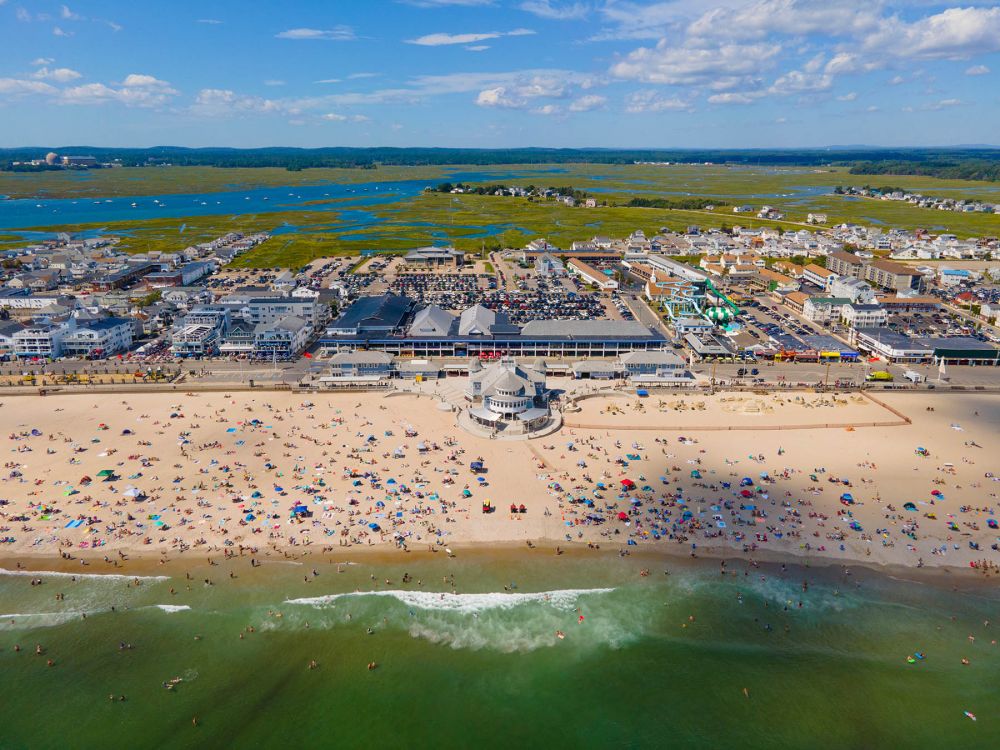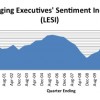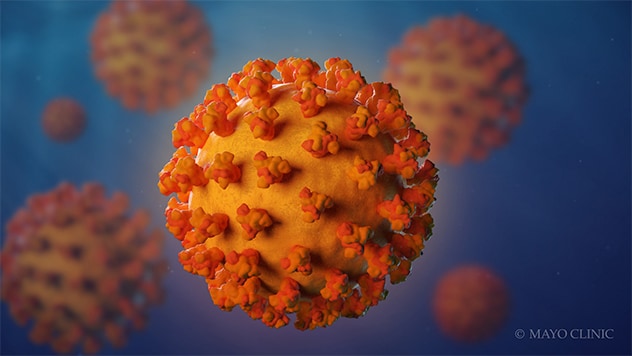

NH Tourism Continues to Break Records
Published Friday May 3, 2024
Author Adam Drapcho

Tourism-related spending in NH approached $2 billion in both the summers of 2018 and 2019, but dropped to $1.4 billion in 2020, according to Dean Runyan Associates. In the summer of 2021, it shot past $2 billion for the first time, and rose to $2.4 billion in 2023. Totals for winter, spring and fall, though not as high as summer, followed similar trends, eclipsing their own seasonal pre-pandemic marks.
More people are coming to visit the state, and they’re spending more, but there are new challenges that come with rising visitation rates. It’s also notable that the statewide numbers are just that: Broad statistics that can overshadow parts of the tourism industry that might still be struggling. For every trend, there are people left out, and that’s true in this case.
The Granite Appeal “We’ve had year-over-year records coming out of the pandemic. It’s nice to see that,” says Lori Harnois, director of the state’s Division of Travel and Tourism .
New Hampshire had several advantages that set the stage for such a rebound, she says. The state’s natural beauty has always been a draw, and the ability for visitors to find uncrowded experiences proved alluring, especially when many still had concerns about infection.
“People were looking for someplace to go where they were less congested. New Hampshire’s backdrop is great for that,” Harnois says. “The state’s accessibility to major metro areas, within a day’s drive of New York City and much less than that for people coming from Massachusetts, is also a draw.”
Even during the pandemic, the state was actively promoting NH as a place where people could safely explore, Harnois says. Those messages have been paying off. “We do track all of our marketing efforts. We do know that for every dollar that we spend on marketing, we get a $17 return on investment,” Harnois says.
Recent analyses have shown that there’s been more what she calls “multi-generational travel,” meaning grandparents, their adult children, and grandchildren, all coming together to engage in activities they can share, such as ice fishing or hiking. And with the advent of hybrid work, people are able to visit more often, or extend their visits, if they can do a few hours of work from their laptop.
While NH is known for its outdoor experiences, there’s also a growing cultural and commercial category of attractions, Harnois says, such as craft breweries, wineries and distilleries, tax-free shopping, classic New England comfort foods, and restaurants run by James Beard-nominated chefs.
All of this appeals to travelers who want an authentic experience. “Especially travelers who are coming from a great distance, they want to get to know the locals,” Harnois says.
Yet, if too many visitors show up to the same place at the same time, it could ruin that authentic experience. Harnois and her team are trying to shape their marketing to highlight some of the lesser-known destinations and avoid crowding.

The View From The North The White Mountains saw a “surge” in numbers in 2021, which continued into 2022, says Charyl Reardon, president of the White Mountains Attractions Association. She says those numbers have since stabilized, but at a level still greater than they were pre-pandemic. Summer still remains the busiest season but that interest is strong throughout the year. Notable, she says, are that so-called “shoulder seasons”—quiet periods when visitors wait for the snow to come, or for spring to sprout—have become shorter.
“Consequently, I feel the region has successfully evolved into a year-round destination, providing stability for many in the hospitality industry with ample opportunities for employment throughout all four seasons,” Reardon says.
So far, the region has kept up with demand, though some acute issues have arisen. She cites overcrowding at some of the most popular trailheads, which leads to concerns about effects on the environment. And during the busiest times, the volume has tested the limits of the local roads, parking and other public services.
Fortunately, Reardon says, staffing hasn’t been as much of a concern over the past two years. Federal programs allowing visas for guest workers have re-opened, and the year-round opportunities in hospitality have drawn many retirees back into the workforce. However, there is concern, she says, that a sustained, higher rate of visitation might result in greater year-round costs for those who wish to make the region their home. “I think it’s important for us to continue finding the balance between attracting visitors, facilitating their movement throughout the region, and preserving the quality of life for residents,” Reardon says.
More than Art on the Walls Not all areas of tourism are experiencing boom times in the state. At The Currier Museum, attendance is still behind pre-pandemic rates, says Karen Graham, interim executive director and COO. She says the latest figures show they’re about 80% to 85% of where they were in 2019, though that’s good compared to the rest of the museum industry, which has been slow to rebound. In fact, this year saw two museums close in the Seacoast: the University of NH shuttered its Museum of Art and the Museum of New Art in Portsmouth suspended operations.
At The Currier , located in Manchester, there’s a broad mix of revenues.
“The museum experience is broader than people coming to look at art on the walls,” Graham says. One revenue line that still hasn’t recovered is large group sales, she says. School groups still haven’t returned, and the museum’s event space rentals were still down in 2023—though reservations are finally looking strong for 2024.
Other areas are well above pre-pandemic totals. Those include sales at the cafe and gift shops, the museum’s wellness programming, and tours of the Frank Lloyd Wright houses. (The Currier now owns two houses designed by the iconic architect.)
“We do a lot of art and wellness programs. Those are much stronger after the pandemic than they were before. The need is so much stronger now,” Graham says. This is driven by the opioid crisis, teenagers struggling with stress and depression, and people traumatized by military combat. “So many groups were negatively impacted during the pandemic; we’re seeing 30% increase year-over-year,” in their veterans programming, Graham says.
One reason why The Currier has outpaced its peers since the pandemic was due to support from the state government during 2020, she says, which allowed the museum to maintain its full staff. “So, when things got better, we didn’t need to rebuild our staff,” Graham says. “It was a benefit to be operating in New Hampshire during the pandemic.”

Watching the Skies Museums are not the only ones facing a tough time. Ron Deshaies, owner of Ocean Cycles and Beach Gear Rentals in Hampton Beach, says he’s been a victim of forecasts—both meteorological and financial.
“I’ve been open 30 years, and last year was the worst year we ever had. It rained every weekend,” he says. To make matters worse, his off-season venture involves buying and re-selling used skating and skiing equipment, and the rain dampened demand for those activities for the winter that followed.
Deshaies speculates that the working-class clientele that he targets are feeling concerned about their own financial stability, especially since so many unavoidable costs—groceries, housing, transportation—have been volatile.
“People are holding onto their money,” Deshaies says. “I believe in my business plan, but I don’t trust the economy right now.”
Ocean Cycles used to have two locations on the Seacoast, but one store was flooded and never re-opened. And after seeing the widespread damage to homes and businesses due to tidal flooding last year, Deshaies is considering a career shift. “My parents used to own a franchise doing flood damage,” Deshaies says. “This year, I decided I’m going to get back into it. This last flood that we had on Hampton Beach, if you were in that type of business, flood control or reconstructive carpentry, you’d be doing pretty well.”
Additional Stories You Might Be Interested In
Mental Health Care Access, NH Museums Rebound, Commercial Real Estate & Construction Services Guide and more.
Subscribe Now

- BEA Careers

Record Setting Summer Tourism Season
- Advertising
- Visitor Spending

- GET EMAIL ALERTS
- Weather
Search location by ZIP code
New hampshire’s fall tourism industry had biggest year ever in 2021, officials say.
4.3 million people spent nearly $2 billion, officials say
- Copy Link Copy {copyShortcut} to copy Link copied!

GET LOCAL BREAKING NEWS ALERTS
The latest breaking updates, delivered straight to your email inbox.
Fall tourism figures in 2021 set a new record in the Granite State.
According to the New Hampshire Division of Travel and Tourism Development, 4.3 million people visited New Hampshire during the fall 2021 season.
That is a 38% increase from the previous record year of 2019.
Those visitors spent nearly $2 billion, a 65% increase from 2019.
- Arts & Culture
- Police Department
- Fire Department
- State of NH
- Available on Apple Podcasts
- Available on Google Podcasts
- Available on Spotify
- City Website
- Available for Apple iOS
- Available for Google Android
- Submit a Press Release
- Help me write a Press Release
- Just for fun
- Uncategorized
- Web Submission
Search for an article
New hampshire tourism officials project another strong fall season.
Published on
The New Hampshire Division of Travel and Tourism Development (DTTD) expects the state’s tourism growth to continue into Fall 2022, with a projected 4.3 million visitors and spending exceeding $2 billion.
This year’s projected visitation will continue a multi-year growth period for New Hampshire, where Fall 2021 tourism resulted in a 39% increase in year-over-year visitation. Like many other domestic destinations that have experienced rapid increases in visitation, the NH DTTD expects Fall 2022 growth to slow as the leisure industry continues to normalize.
“New Hampshire is the premier travel destination in the Northeast all year round, but the vibrant colors of our tremendous foliage truly set us apart during the fall travel season drawing millions of people to all corners of the granite state,” said Taylor Caswell, commissioner of the NH Department of Business and Economic Affairs. “The fall travel season is an incredible economic driver for our state, and we are constantly working to maximize and expand visitation for the benefit of our partners and the people of New Hampshire.”
The primary factors that contributed to last year’s strong performance included a combination of pent-up travel demand, drivable outdoor leisure activities statewide, and early targeted marketing efforts. While those factors from 2021 remain relevant, the considerations of unpredictable economic factors like inflation and higher gas prices, will likely contribute to more modest growth this season.
“We continue to strategically capture market share among our target audiences, promoting the state as a must-visit fall location” said Harnois. “With the abundance of natural beauty across all regions, we expect interest in New Hampshire’s beautiful fall scenery and outdoor activity to continue with both new and returning travelers.”
Although travel continues its return to normalcy, visitors to New Hampshire are encouraged to commit to the “Granite State Promise,” and to practice Leave No Trace, both are efforts to remind residents and visitors alike to be responsible travelers, to plan ahead, be patient, and be respectful of each other to ensure a safe and more enjoyable trip.
For New Hampshire travel inspiration, visit www.visitnh.gov.
Latest Posts
Best for kids: new hampshire ranked the top state for child well-being, watch: finance committee – 6/11/24, city council seeks qualified candidates for ward 2/seat b vacancy, applications due 6/18, community collaboration kicks off summer reading in rochester elementary schools, more like this.
The Rochester Post is operated by the Public Information and Community Engagement Office for the City of Rochester, New Hampshire. The purpose of the website is to serve as an aggregate for municipal press releases, community happenings, public meetings and hearings, and regional news from the State of NH. The posts are available to readers at no cost, with no required subscription. The mission of The Rochester Post is to raise awareness, make public information easily accessible, and to encourage Rochester citizens to get involved in their community and municipal government.
©2020-2023 City of Rochester, New Hampshire

New Hampshire Tourism

You make NHPR possible.
NHPR is nonprofit and independent. We rely on readers like you to support the local, national, and international coverage on this website. Your support makes this news available to everyone.
Give today. A monthly donation of $5 makes a real difference.
New Hampshire
Examining business and the economy.

The Temperamental Economics Of Tourism
This page is no longer being updated. For ongoing coverage of this topic, go to New Hampshire Public Radio.
Tourism is New Hampshire’s second-largest industry–if you combine the state’s smart manufacturing and high technology sectors (SMHT). It’s also a clear point of intersection between government and industry, with the state maintaining a number of parks, campgrounds, and historical sites, and nearby businesses in turn catering to visitors’ needs. Given this close relationship, the state provides funding to market New Hampshire to potential tourists. Some of the heaviest marketing efforts are concentrated in Boston, Philadelphia and New York City. Canadian tourists, especially Quebeçois, also make up a sizable number of New Hampshire’s visitors.
Darren McCollester / Getty Images
From the business perspective, “tourism” is a broad term. It encompasses hotels, resorts, restaurants, retail, and arts and entertainment, among other things. So while statewide reports may indicate overall restaurant or retail sales are up or down, the story might be very different in New Hampshire’s main tourism communities. For these places, weather, gas prices, currency exchange rates, and whether they draw visitors for outdoor activities, site-seeing, or shopping could all be factors.
Despite the temperamental nature of the tourism industry, the Institute for New Hampshire Studies found that in FY 2010, for every marketing dollar spent by the state’s Division of Travel and Tourism Development, local governments saw a return of $7.99.
Latest Posts
- Follow this topic
UNH Researchers Announce New Economic Index For Hospitality Industry And More

A team of researchers at the University of New Hampshire has announced a new economic tool — something they’ve been developing for almost 12 years. The Lodging Executive Sentiment Index, or LESI, is based on a monthly survey of 20 lodging executives who run more than 55 percent of all lodging rooms in the country. […]
Preview: Tomorrow’s “Getting By, Getting Ahead” Looks At High-End Homebuilding In A Lackluster Market

Tomorrow on Morning Edition on NHPR, you can catch the sixth installment of our seven-part series “Getting By, Getting Ahead.” This summer, StateImpact is looking at the personal stories behind New Hampshire’s economic recovery, and how they vary by industry and region. This evening on All Things Considered, host Brady Carlson spoke with reporter Amanda […]
Lakes Region Snapshot: High-End Vacation Homes Impact Year-Round Economy

Tomorrow morning on NHPR, we’ll hear more from Joe Skiffington, a builder of high-end vacation homes in the Lakes Region. Joe’s story is Part Six of our series “Getting By, Getting Ahead,” examining how people across New Hampshire’s seven regions are navigating a recovering economy. ___ Driving through New Hampshire’s Lakes Region, it’s not uncommon to stumble […]
Getting By, Getting Ahead: Seacoast Boutique Owner Bets On Success In High-Rent Downtown

As part of our weekly “Getting By, Getting Ahead” series, StateImpact is traveling across New Hampshire, gathering personal stories from the people behind the economy. In our fourth installment, we visit a bustling boutique in the Seacoast region. _____ Walk down Market Street in downtown Portsmouth, and you’ll see clothing boutiques, a kitchen store, a […]
Preview: Tomorrow’s Installment Of “Getting By, Getting Ahead” Looks At High Rent For Downtown Retailer

Tomorrow on Morning Edition, NHPR will air the fourth installment of our summer series, “Getting By, Getting Ahead,” which focuses on the stories of the people behind the economy. This week, we’ll look at a Portsmouth shopkeeper who decided to move to a high-rent district downtown in the hope of expanding her business. If you’d […]
Seacoast Snapshot: Portsmouth Retailers Struggle With High Downtown Rents

Tomorrow morning on NHPR, we’ll hear from Assiah Russell, a boutique owner in downtown Portsmouth. Assiah’s story is Part Four of our series “Getting By, Getting Ahead,” examining how people across New Hampshire’s seven regions are navigating a recovering economy. ___ Downtown Portsmouth, with its skyline dominated by the large white North Church steeple, and […]
Getting By, Getting Ahead: A White Mountains Innkeeper Struggles With Shifting Economic Landscape

As the country continues to struggle with high unemployment and a lackluster economic recovery, New Hampshire is doing surprisingly well. Unemployment is at five percent — much lower than the national average. And more people are starting small businesses. In our weekly “Getting By, Getting Ahead” series, StateImpact is traveling the state, gathering personal stories […]
White Mountains Snapshot: National Hotel Chains Set Up Shop

Tomorrow morning on NHPR, we’ll introduce you to Ed Butler, an innkeeper in the White Mountains. Ed’s story is Part One of our series “Getting By, Getting Ahead,” examining how people across New Hampshire’s seven regions are navigating a recovering economy. _______ As you follow the winding highway through Franconia and Crawford Notches, weaving in […]
High Hopes In N.H. This Memorial Day Weekend

Memorial Day weekend is the unofficial start to summer — for New Hampshire’s Division of Travel and Tourism Development, at least. The DTTD just launched a television marketing campaign in Boston and New York featuring happy kids running in the woods and playing on the beach. This year, the tourism office predicts that visitors will spend $86 […]
This Week’s Essential StateImpact

Happy Friday! As always, we’d like to celebrate the end of the work week by bringing you up to speed with our most popular posts: How Apps Are Keeping Ski Areas Honest: A pair of Dartmouth researchers take on tales of ski resorts exaggerating snowfall…and find that apps are helping to curb fibbing. How Landowners […]
About StateImpact
StateImpact seeks to inform and engage local communities with broadcast and online news focused on how state government decisions affect your lives. Learn More »
- Pennsylvania
- Know Before You Go
- Visitor's Guide

Order Your Free Visitor's Guide
- Visitors Guide
The 2024 New Hampshire's Visitor Guide will be available for order early summer - check back later to place your order! Until then, you can view the 2023 Online Visitors Guide at any time by clicking here .
Request More Information
View visitor's guide online, sign up for e-newsletters, getting around.
An official website of the United States government
Here’s how you know
Official websites use .gov A .gov website belongs to an official government organization in the United States.
Secure .gov websites use HTTPS A lock ( Lock Locked padlock icon ) or https:// means you’ve safely connected to the .gov website. Share sensitive information only on official, secure websites.

Get copies of vital records and ID cards
Find out how to replace vital documents such as birth certificates, Social Security cards, and more.
How to replace lost or stolen ID cards
Rules for replacing government-issued ID cards vary. Many require you to show an official document, like your birth certificate. This proves your identity or citizenship.
How to get a certified copy of a U.S. birth certificate
Learn how to get a certified copy of your birth certificate.
How to get a copy of a marriage certificate or a marriage license
A marriage license legally allows you to marry. A marriage certificate proves you got married. How you get copies depends on whether you were married in the U.S. or abroad.
How to get a copy of a divorce decree or certificate
A divorce decree is a court order ending a marriage. A divorce certificate is a vital document proving a divorce occurred. Learn when you can use each and how to get copies.
How to get a certified copy of a death certificate
Many organizations require a certified copy of the death certificate when someone dies. How you get copies depends on whether the person died in the U.S. or abroad.
- Patient Care & Health Information
- Diseases & Conditions
- Coronavirus disease 2019 (COVID-19)
COVID-19, also called coronavirus disease 2019, is an illness caused by a virus. The virus is called severe acute respiratory syndrome coronavirus 2, or more commonly, SARS-CoV-2. It started spreading at the end of 2019 and became a pandemic disease in 2020.

- Coronavirus
Coronaviruses are a family of viruses. These viruses cause illnesses such as the common cold, severe acute respiratory syndrome (SARS), Middle East respiratory syndrome (MERS) and coronavirus disease 2019 (COVID-19).
The virus that causes COVID-19 spreads most commonly through the air in tiny droplets of fluid between people in close contact. Many people with COVID-19 have no symptoms or mild illness. But for older adults and people with certain medical conditions, COVID-19 can lead to the need for care in the hospital or death.
Staying up to date on your COVID-19 vaccine helps prevent serious illness, the need for hospital care due to COVID-19 and death from COVID-19 . Other ways that may help prevent the spread of this coronavirus includes good indoor air flow, physical distancing, wearing a mask in the right setting and good hygiene.
Medicine can limit the seriousness of the viral infection. Most people recover without long-term effects, but some people have symptoms that continue for months.
Products & Services
- A Book: Endemic - A Post-Pandemic Playbook
- A Book: Future Care
- Begin Exploring Women's Health Solutions at Mayo Clinic Store
Typical COVID-19 symptoms often show up 2 to 14 days after contact with the virus.
Symptoms can include:
- Shortness of breath.
- Loss of taste or smell.
- Extreme tiredness, called fatigue.
- Digestive symptoms such as upset stomach, vomiting or loose stools, called diarrhea.
- Pain, such as headaches and body or muscle aches.
- Fever or chills.
- Cold-like symptoms such as congestion, runny nose or sore throat.
People may only have a few symptoms or none. People who have no symptoms but test positive for COVID-19 are called asymptomatic. For example, many children who test positive don't have symptoms of COVID-19 illness. People who go on to have symptoms are considered presymptomatic. Both groups can still spread COVID-19 to others.
Some people may have symptoms that get worse about 7 to 14 days after symptoms start.
Most people with COVID-19 have mild to moderate symptoms. But COVID-19 can cause serious medical complications and lead to death. Older adults or people who already have medical conditions are at greater risk of serious illness.
COVID-19 may be a mild, moderate, severe or critical illness.
- In broad terms, mild COVID-19 doesn't affect the ability of the lungs to get oxygen to the body.
- In moderate COVID-19 illness, the lungs also work properly but there are signs that the infection is deep in the lungs.
- Severe COVID-19 means that the lungs don't work correctly, and the person needs oxygen and other medical help in the hospital.
- Critical COVID-19 illness means the lung and breathing system, called the respiratory system, has failed and there is damage throughout the body.
Rarely, people who catch the coronavirus can develop a group of symptoms linked to inflamed organs or tissues. The illness is called multisystem inflammatory syndrome. When children have this illness, it is called multisystem inflammatory syndrome in children, shortened to MIS -C. In adults, the name is MIS -A.
When to see a doctor
Contact a healthcare professional if you test positive for COVID-19 . If you have symptoms and need to test for COVID-19 , or you've been exposed to someone with COVID-19 , a healthcare professional can help.
People who are at high risk of serious illness may get medicine to block the spread of the COVID-19 virus in the body. Or your healthcare team may plan regular checks to monitor your health.
Get emergency help right away for any of these symptoms:
- Can't catch your breath or have problems breathing.
- Skin, lips or nail beds that are pale, gray or blue.
- New confusion.
- Trouble staying awake or waking up.
- Chest pain or pressure that is constant.
This list doesn't include every emergency symptom. If you or a person you're taking care of has symptoms that worry you, get help. Let the healthcare team know about a positive test for COVID-19 or symptoms of the illness.
More Information
- COVID-19 vs. flu: Similarities and differences
- COVID-19, cold, allergies and the flu
- Unusual symptoms of coronavirus
There is a problem with information submitted for this request. Review/update the information highlighted below and resubmit the form.
From Mayo Clinic to your inbox
Sign up for free and stay up to date on research advancements, health tips, current health topics, and expertise on managing health. Click here for an email preview.
Error Email field is required
Error Include a valid email address
To provide you with the most relevant and helpful information, and understand which information is beneficial, we may combine your email and website usage information with other information we have about you. If you are a Mayo Clinic patient, this could include protected health information. If we combine this information with your protected health information, we will treat all of that information as protected health information and will only use or disclose that information as set forth in our notice of privacy practices. You may opt-out of email communications at any time by clicking on the unsubscribe link in the e-mail.
Thank you for subscribing!
You'll soon start receiving the latest Mayo Clinic health information you requested in your inbox.
Sorry something went wrong with your subscription
Please, try again in a couple of minutes
COVID-19 is caused by infection with the severe acute respiratory syndrome coronavirus 2, also called SARS-CoV-2.
The coronavirus spreads mainly from person to person, even from someone who is infected but has no symptoms. When people with COVID-19 cough, sneeze, breathe, sing or talk, their breath may be infected with the COVID-19 virus.
The coronavirus carried by a person's breath can land directly on the face of a nearby person, after a sneeze or cough, for example. The droplets or particles the infected person breathes out could possibly be breathed in by other people if they are close together or in areas with low air flow. And a person may touch a surface that has respiratory droplets and then touch their face with hands that have the coronavirus on them.
It's possible to get COVID-19 more than once.
- Over time, the body's defense against the COVID-19 virus can fade.
- A person may be exposed to so much of the virus that it breaks through their immune defense.
- As a virus infects a group of people, the virus copies itself. During this process, the genetic code can randomly change in each copy. The changes are called mutations. If the coronavirus that causes COVID-19 changes in ways that make previous infections or vaccination less effective at preventing infection, people can get sick again.
The virus that causes COVID-19 can infect some pets. Cats, dogs, hamsters and ferrets have caught this coronavirus and had symptoms. It's rare for a person to get COVID-19 from a pet.
Risk factors
The main risk factors for COVID-19 are:
- If someone you live with has COVID-19 .
- If you spend time in places with poor air flow and a higher number of people when the virus is spreading.
- If you spend more than 30 minutes in close contact with someone who has COVID-19 .
Many factors affect your risk of catching the virus that causes COVID-19 . How long you are in contact, if the space has good air flow and your activities all affect the risk. Also, if you or others wear masks, if someone has COVID-19 symptoms and how close you are affects your risk. Close contact includes sitting and talking next to one another, for example, or sharing a car or bedroom.
It seems to be rare for people to catch the virus that causes COVID-19 from an infected surface. While the virus is shed in waste, called stool, COVID-19 infection from places such as a public bathroom is not common.
Serious COVID-19 illness risk factors
Some people are at a higher risk of serious COVID-19 illness than others. This includes people age 65 and older as well as babies younger than 6 months. Those age groups have the highest risk of needing hospital care for COVID-19 .
Not every risk factor for serious COVID-19 illness is known. People of all ages who have no other medical issues have needed hospital care for COVID-19 .
Known risk factors for serious illness include people who have not gotten a COVID-19 vaccine. Serious illness also is a higher risk for people who have:
- Sickle cell disease or thalassemia.
- Serious heart diseases and possibly high blood pressure.
- Chronic kidney, liver or lung diseases.
People with dementia or Alzheimer's also are at higher risk, as are people with brain and nervous system conditions such as stroke. Smoking increases the risk of serious COVID-19 illness. And people with a body mass index in the overweight category or obese category may have a higher risk as well.
Other medical conditions that may raise the risk of serious illness from COVID-19 include:
- Cancer or a history of cancer.
- Type 1 or type 2 diabetes.
- Weakened immune system from solid organ transplants or bone marrow transplants, some medicines, or HIV .
This list is not complete. Factors linked to a health issue may raise the risk of serious COVID-19 illness too. Examples are a medical condition where people live in a group home, or lack of access to medical care. Also, people with more than one health issue, or people of older age who also have health issues have a higher chance of severe illness.
Related information
- COVID-19: Who's at higher risk of serious symptoms? - Related information COVID-19: Who's at higher risk of serious symptoms?
Complications
Complications of COVID-19 include long-term loss of taste and smell, skin rashes, and sores. The illness can cause trouble breathing or pneumonia. Medical issues a person already manages may get worse.
Complications of severe COVID-19 illness can include:
- Acute respiratory distress syndrome, when the body's organs do not get enough oxygen.
- Shock caused by the infection or heart problems.
- Overreaction of the immune system, called the inflammatory response.
- Blood clots.
- Kidney injury.
Post-COVID-19 syndrome
After a COVID-19 infection, some people report that symptoms continue for months, or they develop new symptoms. This syndrome has often been called long COVID, or post- COVID-19 . You might hear it called long haul COVID-19 , post-COVID conditions or PASC. That's short for post-acute sequelae of SARS -CoV-2.
Other infections, such as the flu and polio, can lead to long-term illness. But the virus that causes COVID-19 has only been studied since it began to spread in 2019. So, research into the specific effects of long-term COVID-19 symptoms continues.
Researchers do think that post- COVID-19 syndrome can happen after an illness of any severity.
Getting a COVID-19 vaccine may help prevent post- COVID-19 syndrome.
- Long-term effects of COVID-19
The Centers for Disease Control and Prevention (CDC) recommends a COVID-19 vaccine for everyone age 6 months and older. The COVID-19 vaccine can lower the risk of death or serious illness caused by COVID-19.
The COVID-19 vaccines available in the United States are:
2023-2024 Pfizer-BioNTech COVID-19 vaccine. This vaccine is available for people age 6 months and older.
Among people with a typical immune system:
- Children age 6 months up to age 4 years are up to date after three doses of a Pfizer-BioNTech COVID-19 vaccine.
- People age 5 and older are up to date after one Pfizer-BioNTech COVID-19 vaccine.
- For people who have not had a 2023-2024 COVID-19 vaccination, the CDC recommends getting an additional shot of that updated vaccine.
2023-2024 Moderna COVID-19 vaccine. This vaccine is available for people age 6 months and older.
- Children ages 6 months up to age 4 are up to date if they've had two doses of a Moderna COVID-19 vaccine.
- People age 5 and older are up to date with one Moderna COVID-19 vaccine.
2023-2024 Novavax COVID-19 vaccine. This vaccine is available for people age 12 years and older.
- People age 12 years and older are up to date if they've had two doses of a Novavax COVID-19 vaccine.
In general, people age 5 and older with typical immune systems can get any vaccine approved or authorized for their age. They usually don't need to get the same vaccine each time.
Some people should get all their vaccine doses from the same vaccine maker, including:
- Children ages 6 months to 4 years.
- People age 5 years and older with weakened immune systems.
- People age 12 and older who have had one shot of the Novavax vaccine should get the second Novavax shot in the two-dose series.
Talk to your healthcare professional if you have any questions about the vaccines for you or your child. Your healthcare team can help you if:
- The vaccine you or your child got earlier isn't available.
- You don't know which vaccine you or your child received.
- You or your child started a vaccine series but couldn't finish it due to side effects.
People with weakened immune systems
Your healthcare team may suggest added doses of COVID-19 vaccine if you have a moderately or seriously weakened immune system. The FDA has also authorized the monoclonal antibody pemivibart (Pemgarda) to prevent COVID-19 in some people with weakened immune systems.
Control the spread of infection
In addition to vaccination, there are other ways to stop the spread of the virus that causes COVID-19 .
If you are at a higher risk of serious illness, talk to your healthcare professional about how best to protect yourself. Know what to do if you get sick so you can quickly start treatment.
If you feel ill or have COVID-19 , stay home and away from others, including pets, if possible. Avoid sharing household items such as dishes or towels if you're sick.
In general, make it a habit to:
- Test for COVID-19 . If you have symptoms of COVID-19 test for the infection. Or test five days after you came in contact with the virus.
- Help from afar. Avoid close contact with anyone who is sick or has symptoms, if possible.
- Wash your hands. Wash your hands well and often with soap and water for at least 20 seconds. Or use an alcohol-based hand sanitizer with at least 60% alcohol.
- Cover your coughs and sneezes. Cough or sneeze into a tissue or your elbow. Then wash your hands.
- Clean and disinfect high-touch surfaces. For example, clean doorknobs, light switches, electronics and counters regularly.
Try to spread out in crowded public areas, especially in places with poor airflow. This is important if you have a higher risk of serious illness.
The CDC recommends that people wear a mask in indoor public spaces if you're in an area with a high number of people with COVID-19 in the hospital. They suggest wearing the most protective mask possible that you'll wear regularly, that fits well and is comfortable.
- COVID-19 vaccines: Get the facts - Related information COVID-19 vaccines: Get the facts
- Comparing the differences between COVID-19 vaccines - Related information Comparing the differences between COVID-19 vaccines
- Different types of COVID-19 vaccines: How they work - Related information Different types of COVID-19 vaccines: How they work
- Debunking COVID-19 myths - Related information Debunking COVID-19 myths
Travel and COVID-19
Travel brings people together from areas where illnesses may be at higher levels. Masks can help slow the spread of respiratory diseases in general, including COVID-19 . Masks help the most in places with low air flow and where you are in close contact with other people. Also, masks can help if the places you travel to or through have a high level of illness.
Masking is especially important if you or a companion have a high risk of serious illness from COVID-19 .
- COVID-19 travel advice
- COVID-19 vaccines
- COVID-19 vaccines for kids: What you need to know
- Debunking coronavirus myths
- Different COVID-19 vaccines
- Fight coronavirus (COVID-19) transmission at home
- Herd immunity and coronavirus
- How well do face masks protect against COVID-19?
- Safe outdoor activities during the COVID-19 pandemic
- Safety tips for attending school during COVID-19
- COVID-19 and vitamin D
- COVID-19: How can I protect myself?
- Mayo Clinic Minute: How dirty are common surfaces?
- Mayo Clinic Minute: You're washing your hands all wrong
- Goldman L, et al., eds. COVID-19: Epidemiology, clinical manifestations, diagnosis, community prevention, and prognosis. In: Goldman-Cecil Medicine. 27th ed. Elsevier; 2024. https://www.clinicalkey.com. Accessed Dec. 17, 2023.
- Coronavirus disease 2019 (COVID-19) treatment guidelines. National Institutes of Health. https://www.covid19treatmentguidelines.nih.gov/. Accessed Dec. 18, 2023.
- AskMayoExpert. COVID-19: Testing, symptoms. Mayo Clinic; Nov. 2, 2023.
- Symptoms of COVID-19. Centers for Disease Control and Preventions. https://www.cdc.gov/coronavirus/2019-ncov/symptoms-testing/symptoms.html. Accessed Dec. 20, 2023.
- AskMayoExpert. COVID-19: Outpatient management. Mayo Clinic; Oct. 10, 2023.
- Morris SB, et al. Case series of multisystem inflammatory syndrome in adults associated with SARS-CoV-2 infection — United Kingdom and United States, March-August 2020. MMWR. Morbidity and Mortality Weekly Report 2020;69:1450. DOI: http://dx.doi.org/10.15585/mmwr.mm6940e1external icon.
- COVID-19 testing: What you need to know. Centers for Disease Control and Prevention. https://www.cdc.gov/coronavirus/2019-ncov/symptoms-testing/testing.html. Accessed Dec. 20, 2023.
- SARS-CoV-2 in animals. American Veterinary Medical Association. https://www.avma.org/resources-tools/one-health/covid-19/sars-cov-2-animals-including-pets. Accessed Jan. 17, 2024.
- Understanding exposure risk. Centers for Disease Control and Prevention. https://www.cdc.gov/coronavirus/2019-ncov/your-health/risks-exposure.html. Accessed Jan. 10, 2024.
- People with certain medical conditions. Centers for Disease Control and Prevention. https://www.cdc.gov/coronavirus/2019-ncov/need-extra-precautions/people-with-medical-conditions.html. Accessed Jan. 10, 2024.
- Factors that affect your risk of getting very sick from COVID-19. Centers for Disease Control and Prevention. https://www.cdc.gov/coronavirus/2019-ncov/your-health/risks-getting-very-sick.html. Accessed Jan. 10, 2024.
- Regan JJ, et al. Use of Updated COVID-19 Vaccines 2023-2024 Formula for Persons Aged ≥6 Months: Recommendations of the Advisory Committee on Immunization Practices—United States, September 2023. MMWR. Morbidity and Mortality Weekly Report 2023; 72:1140–1146. DOI: http://dx.doi.org/10.15585/mmwr.mm7242e1.
- Long COVID or post-COVID conditions. Centers for Disease Control and Prevention. https://www.cdc.gov/coronavirus/2019-ncov/long-term-effects/index.html. Accessed Jan. 10, 2024.
- Stay up to date with your vaccines. Centers for Disease Control and Prevention. https://www.cdc.gov/coronavirus/2019-ncov/vaccines/stay-up-to-date.html. Accessed Jan. 10, 2024.
- Interim clinical considerations for use of COVID-19 vaccines currently approved or authorized in the United States. Centers for Disease Control and Prevention. https://www.cdc.gov/vaccines/covid-19/clinical-considerations/covid-19-vaccines-us.html#CoV-19-vaccination. Accessed Jan. 10, 2024.
- Use and care of masks. Centers for Disease Control and Prevention. https://www.cdc.gov/coronavirus/2019-ncov/prevent-getting-sick/about-face-coverings.html. Accessed Jan. 10, 2024.
- How to protect yourself and others. Centers for Disease Control and Prevention. https://www.cdc.gov/coronavirus/2019-ncov/prevent-getting-sick/prevention.html. Accessed Jan. 10, 2024.
- People who are immunocompromised. Centers for Disease Control and Prevention. https://www.cdc.gov/coronavirus/2019-ncov/need-extra-precautions/people-who-are-immunocompromised.html. Accessed Jan. 10, 2024.
- Masking during travel. Centers for Disease Control and Prevention. https://wwwnc.cdc.gov/travel/page/masks. Accessed Jan. 10, 2024.
- AskMayoExpert. COVID-19: Testing. Mayo Clinic. 2023.
- COVID-19 test basics. U.S. Food and Drug Administration. https://www.fda.gov/consumers/consumer-updates/covid-19-test-basics. Accessed Jan. 11, 2024.
- At-home COVID-19 antigen tests — Take steps to reduce your risk of false negative results: FDA safety communication. U.S. Food and Drug Administration. https://www.fda.gov/medical-devices/safety-communications/home-covid-19-antigen-tests-take-steps-reduce-your-risk-false-negative-results-fda-safety. Accessed Jan. 11, 2024.
- Interim clinical considerations for COVID-19 treatment in outpatients. Centers for Disease Control and Prevention. https://www.cdc.gov/coronavirus/2019-ncov/hcp/clinical-care/outpatient-treatment-overview.html. Accessed Jan. 11, 2024.
- Know your treatment options for COVID-19. U.S. Food and Drug Administration. https://www.fda.gov/consumers/consumer-updates/know-your-treatment-options-covid-19. Accessed Jan. 11, 2024.
- AskMayoExpert. COVID:19 Drug regimens and other treatment options. Mayo Clinic. 2023.
- Preventing spread of respiratory viruses when you're sick. Centers for Disease Control and Prevention. https://www.cdc.gov/respiratory-viruses/prevention/precautions-when-sick.html. Accessed March 5, 2024.
- AskMayoExpert. COVID-19: Quarantine and isolation. Mayo Clinic. 2023.
- COVID-19 resource and information guide. National Alliance on Mental Illness. https://www.nami.org/Support-Education/NAMI-HelpLine/COVID-19-Information-and-Resources/COVID-19-Resource-and-Information-Guide. Accessed Jan. 11, 2024.
- COVID-19 overview and infection prevention and control priorities in non-U.S. healthcare settings. Centers for Disease Control and Prevention. https://www.cdc.gov/coronavirus/2019-ncov/hcp/non-us-settings/overview/index.html. Accessed Jan. 16, 2024.
- Kim AY, et al. COVID-19: Management in hospitalized adults. https://www.uptodate.com/contents/search. Accessed Jan. 17, 2024.
- O'Horo JC, et al. Outcomes of COVID-19 with the Mayo Clinic Model of Care and Research. Mayo Clinic Proceedings. 2021; doi:10.1016/j.mayocp.2020.12.006.
- At-home OTC COVID-19 diagnostic tests. U.S. Food and Drug Administration. https://www.fda.gov/medical-devices/coronavirus-covid-19-and-medical-devices/home-otc-covid-19-diagnostic-tests. Accessed Jan. 22, 2024.
- Emergency use authorizations for drugs and non-vaccine biological products. U.S. Food and Drug Association. https://www.fda.gov/drugs/emergency-preparedness-drugs/emergency-use-authorizations-drugs-and-non-vaccine-biological-products. Accessed March 25, 2024.
- Coronavirus infection by race
- COVID-19 and pets
- COVID-19 and your mental health
- COVID-19 drugs: Are there any that work?
- COVID-19 in babies and children
- COVID-19 variant
- COVID-19: Who's at higher risk of serious symptoms?
- How do COVID-19 antibody tests differ from diagnostic tests?
- Is hydroxychloroquine a treatment for COVID-19?
- Pregnancy and COVID-19
- Sex and COVID-19
- Treating COVID-19 at home
Associated Procedures
- Convalescent plasma therapy
- COVID-19 antibody testing
- COVID-19 tests
- Extracorporeal membrane oxygenation (ECMO)
News from Mayo Clinic
- A Mayo Clinic virologist explains FLiRT and why you may need a new COVID-19 vaccination May 30, 2024, 02:30 p.m. CDT
- Mayo Clinic Q and A: Who should get the latest COVID-19 vaccine? Nov. 21, 2023, 01:30 p.m. CDT
- Can you get COVID-19 and the flu at the same time? A Mayo Clinic expert weighs in Oct. 16, 2023, 04:30 p.m. CDT
- At-home COVID-19 tests: A Mayo Clinic expert answers questions on expiration dates and the new variants Sept. 18, 2023, 04:00 p.m. CDT
- Mayo Clinic expert answers questions about the new COVID-19 vaccine Sept. 13, 2023, 04:15 p.m. CDT
- Study identifies risk factors for long-haul COVID disease in adults Sept. 13, 2023, 02:00 p.m. CDT
- Mayo researchers find vaccine may reduce severity of long-haul COVID symptoms Aug. 23, 2023, 04:34 p.m. CDT
- Corticosteroids lower the likelihood of in-hospital mortality from COVID-19 Aug. 04, 2023, 03:00 p.m. CDT
- COVID-19 vaccine administration simplified April 21, 2023, 07:00 p.m. CDT
- Science Saturday: COVID-19 -- the pandemic that's forever changed laboratory testing April 15, 2023, 11:00 a.m. CDT
- Mayo Clinic expert talks about the new omicron variant April 13, 2023, 02:13 p.m. CDT
- Mayo Clinic to ease universal face mask requirement April 04, 2023, 03:05 p.m. CDT
- 'Deaths of Despair' contribute to 17% rise in Minnesota's death rate during COVID-19 pandemic March 13, 2023, 12:00 p.m. CDT
- Rising cases of COVID-19 variant, XBB.1.5 Jan. 09, 2023, 05:15 p.m. CDT
- Bivalent COVID-19 booster approved for children 6 months and older Dec. 09, 2022, 09:33 p.m. CDT
- Mayo Clinic Minute: How to self-care at home when you have COVID-19 Dec. 06, 2022, 05:00 p.m. CDT
- Halloween safety tips from a Mayo Clinic infectious diseases expert Oct. 27, 2022, 02:00 p.m. CDT
- COVID-19, RSV and flu--season of respiratory infections Oct. 26, 2022, 04:30 p.m. CDT
- COVID-19 bivalent booster vaccines for kids 5-11 approved, Mayo Clinic awaits supply Oct. 13, 2022, 04:54 p.m. CDT
- Questions answered about the COVID-19 bivalent booster vaccines Oct. 12, 2022, 03:30 p.m. CDT
- Will the COVID-19 booster be like an annual flu shot? Sept. 12, 2022, 04:30 p.m. CDT
- Mayo Clinic Q and A: Who needs back-to-school COVID-19 vaccinations and boosters? Sept. 04, 2022, 11:00 a.m. CDT
- Q&A podcast: Updated COVID-19 boosters target omicron variants Sept. 02, 2022, 12:30 p.m. CDT
- Mayo Clinic Minute: Back-to-school COVID-19 vaccinations for kids Aug. 15, 2022, 03:15 p.m. CDT
- Mayo Clinic research shows bebtelovimab to be a reliable option for treating COVID-19 in era of BA.2, other subvariants Aug. 15, 2022, 02:09 p.m. CDT
- Mayo Clinic Q and A: New variants of COVID-19 Aug. 04, 2022, 12:30 p.m. CDT
- COVID-19 variant BA.5 is dominant strain; BA.2.75 is being monitored July 28, 2022, 02:30 p.m. CDT
- Mayo Clinic researchers pinpoint genetic variations that might sway course of COVID-19 July 25, 2022, 02:00 p.m. CDT
- Mayo Clinic Q&A podcast: BA.5 omicron variant fueling latest COVID-19 surge July 15, 2022, 12:00 p.m. CDT
- What you need to know about the BA.5 omicron variant July 14, 2022, 06:41 p.m. CDT
- Mayo Clinic Q&A podcast: The importance of COVID-19 vaccines for children under 5 July 06, 2022, 01:00 p.m. CDT
- COVID-19 vaccination for kids age 5 and younger starting the week of July 4 at most Mayo sites July 01, 2022, 04:00 p.m. CDT
- Patients treated with monoclonal antibodies during COVID-19 delta surge had low rates of severe disease, Mayo Clinic study finds June 27, 2022, 03:00 p.m. CDT
- Long COVID and the digestive system: Mayo Clinic expert describes common symptoms June 21, 2022, 02:43 p.m. CDT
- Mayo Clinic Q&A podcast: COVID-19 update June 17, 2022, 01:08 p.m. CDT
- Study finds few COVID-19 patients get rebound symptoms after Paxlovid treatment June 14, 2022, 10:06 a.m. CDT
- Symptoms & causes
- Diagnosis & treatment
- Doctors & departments
- COVID-19 vaccines: Get the facts
- How well do face masks protect against coronavirus?
- Post-COVID Recovery
News on coronavirus disease 2019 (COVID-19)
Learn the latest medical news about COVID-19 on Mayo Clinic News Network.
We’re transforming healthcare
Make a gift now and help create new and better solutions for more than 1.3 million patients who turn to Mayo Clinic each year.

IMAGES
COMMENTS
Concord, NH - Today, the New Hampshire Division of Travel and Tourism Development announced new records set during New Hampshire's fall 2021 tourism season, during which New Hampshire saw a 38% increase in visitors from the previous record year (2019), with 4.3M visitors traveling to the Granite State. Spending by visitors in New Hampshire reached nearly $2 billion - a 65% increase from 2019.
For more information about New Hampshire tourism, call 603-271-2665 or visit www.visitnh.gov. Stay connected with New Hampshire tourism on Facebook, Twitter, Instagram, Pinterest and YouTube, and be sure to follow the #LiveFreeNH tag to see what other people are saying about New Hampshire. Media Contact: Kris Neilsen
Tourism-related spending in NH approached $2 billion in both the summers of 2018 and 2019, but dropped to $1.4 billion in 2020, according to Dean Runyan Associates. In the summer of 2021, it shot past $2 billion for the first time, and rose to $2.4 billion in 2023. Totals for winter, spring and fall, though not as high as summer, followed ...
Research. Travel Trends. Please click on the links below to review Travel Trends reports for 2024. April 2024. March 2024. February 2024. January 2024. Please click on the links below to review Travel Trends reports for 2023. December 2023.
CONCORD, N.H. (AP) — New Hampshire tourism officials say a record 4.3 million visitors came to the state last fall — an increase of 38% from 2019, the last record year. Visitors also spent ...
The New Hampshire Division of Travel and Tourism Development (DTTD) announces results from its FY2023 summer advertising campaign that shows a record setting season for spending and visitation. According to the Division's research team, Strategic Marketing & Research Insights (SMARI), the state welcomed 4.5 million visitors, up 3.3 percent from FY2022; spending by visitors totaled $2.3 ...
Concord, NH - Following a record-breaking summer, New Hampshire's fall 2021 tourism season set new records last year, bringing 4.3M visitors to the state - an increase of 38% from 2019, the previous record year. Visitors spend nearly $2 billion in-state - an increase of 65% from 2019. "New Hampshire is the #1 state to live, work, and ...
NH Industry Research. The Division of Travel and Tourism has a contract with Strategic Marketing & Research Insights, LLC (SMARInsights). SMARInstights is an Indiana-based full-service research firm with a focus on travel and tourism. They have more than 33 years of proven experience, having worked with 20 state tourism organizations, 38 ...
New Hampshire during all four seasons, the largest number of tourists visit during the summer. By nearly every metric, New Hampshire's tourism increased steadily between 2011 and 2019. In 2019, 11.5 million travelers visited New Hampshire, spending a total of $5.6 billion.2 The coronavirus pandemic had a large impact on
Welcome | New Hampshire Employment Security
CONCORD, N.H. —. New Hampshire saw a large increase in tourism this past summer. A record 4.4 million visitors spent more than $2.1 billion dollars last summer, according to the Division of ...
In January 2022, when the numbers were in, state officials said tourism in summer 2021 set a record, with millions of visitors pouring into the White Mountains, Great North Woods,
For more information about New Hampshire tourism, call 603-271-2665 or visit www.visitnh.gov. Stay connected with New Hampshire tourism on Facebook, Twitter, Instagram, Pinterest and YouTube, and be sure to follow the #LiveFreeNH tag to see what other people are saying about New Hampshire. Media Contact: Kris Neilsen
There's nothing quite like summertime in New Hampshire. From heart-pumping hikes on some of the highest peaks in the northeast to soul-soothing swims in our crystal clear lakes, your perfect summer getaway awaits in the Granite State. ... Division of Travel and Tourism Development, 100 North Main Street, Suite 100, Concord, NH, 03301
Fall tourism figures in 2021 set a new record in the Granite State.According to the New Hampshire Division of Travel and Tourism Development, 4.3 million people visited New Hampshire during the ...
CONCORD — As the ongoing pandemic continues to impact tourism destinations worldwide, New Hampshire experienced a record-breaking summer and strong year overall according to New Hampshire Division of Travel and Tourism Development's research. In summer 2021, the state welcomed 4.4 million visitors who spent more than $2.1 billion, breaking ...
The New Hampshire Division of Travel and Tourism Development (DTTD) expects the state's tourism growth to continue into Fall 2022, with a projected 4.3 million visitors and spending exceeding $2 billion. This year's projected visitation will continue a multi-year growth period for New Hampshire, where Fall 2021 tourism resulted in a 39% increase in year-over-year […]
With New Hampshire's skyrocketing real estate market and predictions for a busy summer tourism season, we take stock of our state's economy. Finding… Listen • 56:08
Thinking about a New Hampshire vacation? Whether you're traveling with family or friends, we've got resources to get you started planning your adventure today. ... Division of Travel and Tourism Development, 100 North Main Street, Suite 100, Concord, NH, 03301
New Hampshire during all four seasons, the largest number of tourists visit during the summer. By nearly every metric, New Hampshire's tourism increased steadily between 2011 and 2019. In 2019, 11.5 million travelers visited New Hampshire, spending a total of $5.6 billion.2 The coronavirus pandemic had a large impact on
Despite the temperamental nature of the tourism industry, the Institute for New Hampshire Studies found that in FY 2010, for every marketing dollar spent by the state's Division of Travel and ...
Our Visitor's Guide highlights uniquely New Hampshire experiences, hidden gems, how to live like a local and more! Order your free guide today! ... Division of Travel and Tourism Development, 100 North Main Street, Suite 100, Concord, NH, 03301 Stay in the know. ...
Visit nh.gov for a list of free .pdf readers for a variety of operating systems. Statistics are one way to follow trends within New Hampshire forests. Who owns forestland in the state, how much forestland there is and what the inventory is helps inform decisions about forest management going forward.
USDA National Agricultural Statistics Service Information. NASS publications cover a wide range of subjects, from traditional crops, such as corn and wheat, to specialties, such as mushrooms and flowers; from calves born to hogs slaughtered; from agricultural prices to land in farms. The agency has the distinction of being known as The Fact Finders of U.S. Agriculture due to the abundance of ...
Many organizations require a certified copy of the death certificate when someone dies. How you get copies depends on whether the person died in the U.S. or abroad. Find out how to replace vital documents such as birth and death certificates, Social Security cards, marriage and divorce certificates, and more.
Travel brings people together from areas where illnesses may be at higher levels. Masks can help slow the spread of respiratory diseases in general, including COVID-19. Masks help the most in places with low air flow and where you are in close contact with other people. Also, masks can help if the places you travel to or through have a high ...